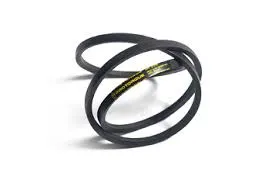- Arabic
- French
- Russian
- Spanish
- Portuguese
- Turkish
- Armenian
- English
- Albanian
- Amharic
- Azerbaijani
- Basque
- Belarusian
- Bengali
- Bosnian
- Bulgarian
- Catalan
- Cebuano
- Corsican
- Croatian
- Czech
- Danish
- Dutch
- Afrikaans
- Esperanto
- Estonian
- Finnish
- Frisian
- Galician
- Georgian
- German
- Greek
- Gujarati
- Haitian Creole
- hausa
- hawaiian
- Hebrew
- Hindi
- Miao
- Hungarian
- Icelandic
- igbo
- Indonesian
- irish
- Italian
- Japanese
- Javanese
- Kannada
- kazakh
- Khmer
- Rwandese
- Korean
- Kurdish
- Kyrgyz
- Lao
- Latin
- Latvian
- Lithuanian
- Luxembourgish
- Macedonian
- Malgashi
- Malay
- Malayalam
- Maltese
- Maori
- Marathi
- Mongolian
- Myanmar
- Nepali
- Norwegian
- Norwegian
- Occitan
- Pashto
- Persian
- Polish
- Punjabi
- Romanian
- Samoan
- Scottish Gaelic
- Serbian
- Sesotho
- Shona
- Sindhi
- Sinhala
- Slovak
- Slovenian
- Somali
- Sundanese
- Swahili
- Swedish
- Tagalog
- Tajik
- Tamil
- Tatar
- Telugu
- Thai
- Turkmen
- Ukrainian
- Urdu
- Uighur
- Uzbek
- Vietnamese
- Welsh
- Bantu
- Yiddish
- Yoruba
- Zulu
ऑक्टोबर . 06, 2024 21:18 Back to list
car serpentine belt
Understanding the Car Serpentine Belt An Essential Component for Your Vehicle
In the dynamics of automotive engineering, one important component that often goes unnoticed by vehicle owners is the serpentine belt. This crucial part plays a vital role in the functioning of various systems within the car, yet many drivers remain unaware of its significance, maintenance needs, and potential issues. In this article, we will explore what a serpentine belt is, its function, signs of wear, and how to maintain it for optimal vehicle performance.
What is a Serpentine Belt?
The serpentine belt, also known as the accessory belt, is a long, winding rubber belt that connects multiple components of an engine. This includes the alternator, power steering pump, water pump, air conditioning compressor, and sometimes even the crankshaft. Unlike older vehicles that often had multiple belts for each component, modern cars typically utilize a single serpentine belt for efficiency and simplicity.
The design of the serpentine belt allows it to wrap around various pulleys, maintaining proper tension and alignment to drive multiple accessories simultaneously. This not only minimizes space under the hood but also reduces complexity in the vehicle’s engine compartment.
Functionality of the Serpentine Belt
The primary function of the serpentine belt is to transfer power from the engine crankshaft to various accessories, ensuring they operate effectively. For instance, the alternator generates electricity to charge the battery and power electrical systems, while the power steering pump aids in steering, making it easier for drivers to maneuver. Simultaneously, the water pump circulates coolant to prevent the engine from overheating, while the air conditioning compressor manages the vehicle’s climate control system.
In short, the serpentine belt acts as the lifeline for essential vehicle functions, making it critical for the overall performance and reliability of your car.
Signs of Wear and Tear
Like all mechanical components, serpentine belts can wear out over time, leading to potential issues if not addressed promptly. Here are some common signs that your serpentine belt may need inspection or replacement
1. Squeaking or Chirping Noises A high-pitched squeal or chirp when the engine is running could indicate that the serpentine belt is frayed or loose.
2. Visual Damage Regularly inspect the belt for signs of wear, such as cracks, fraying, or shiny, smooth patches, which indicate excessive wear.
car serpentine belt

4. AC Performance Problems Insufficient cooling from the air conditioning system may also indicate that the belt is slipping or has lost tension.
5. Dashboard Warning Lights Some modern vehicles have warning systems that alert drivers to engine performance issues, which may be linked to serpentine belt failure.
Maintenance and Replacement
Maintaining the serpentine belt is crucial for ensuring that your vehicle runs smoothly. Most manufacturers recommend checking the condition of the serpentine belt every 30,000 to 50,000 miles or as part of routine vehicle maintenance.
When replacing the serpentine belt, it is essential to consider the following steps
1. Consult the Owner's Manual Refer to your vehicle's manual for specific guidelines on belt replacement intervals and techniques.
2. Professional Inspection If you’re unsure about the belt's condition, have it assessed by a qualified mechanic who can provide a thorough inspection.
3. Know the Symptoms Be proactive about any signs of wear mentioned earlier and address them before they result in more significant problems.
Conclusion
The serpentine belt may be a small component in the grand scheme of your vehicle’s mechanics, but it has profound implications for performance and reliability. Understanding its role, recognizing the signs of wear, and maintaining it properly are essential for every vehicle owner. By doing so, you can ensure that your vehicle continues to operate efficiently and safely, allowing you to hit the road with peace of mind. Remember, a well-maintained serpentine belt contributes to a longer-lasting engine and a smoothly running vehicle.
-
Korean Auto Parts Timing Belt 24312-37500 For Hyundai/Kia
NewsMar.07,2025
-
7PK2300 90916-T2024 RIBBED BELT POLY V BELT PK BELT
NewsMar.07,2025
-
Chinese Auto Belt Factory 310-2M-22 For BMW/Mercedes-Benz
NewsMar.07,2025
-
Chinese Auto Belt Factory 310-2M-22 For BMW/Mercedes-Benz
NewsMar.07,2025
-
90916-02660 PK Belt 6PK1680 For Toyota
NewsMar.07,2025
-
drive belt serpentine belt
NewsMar.07,2025

